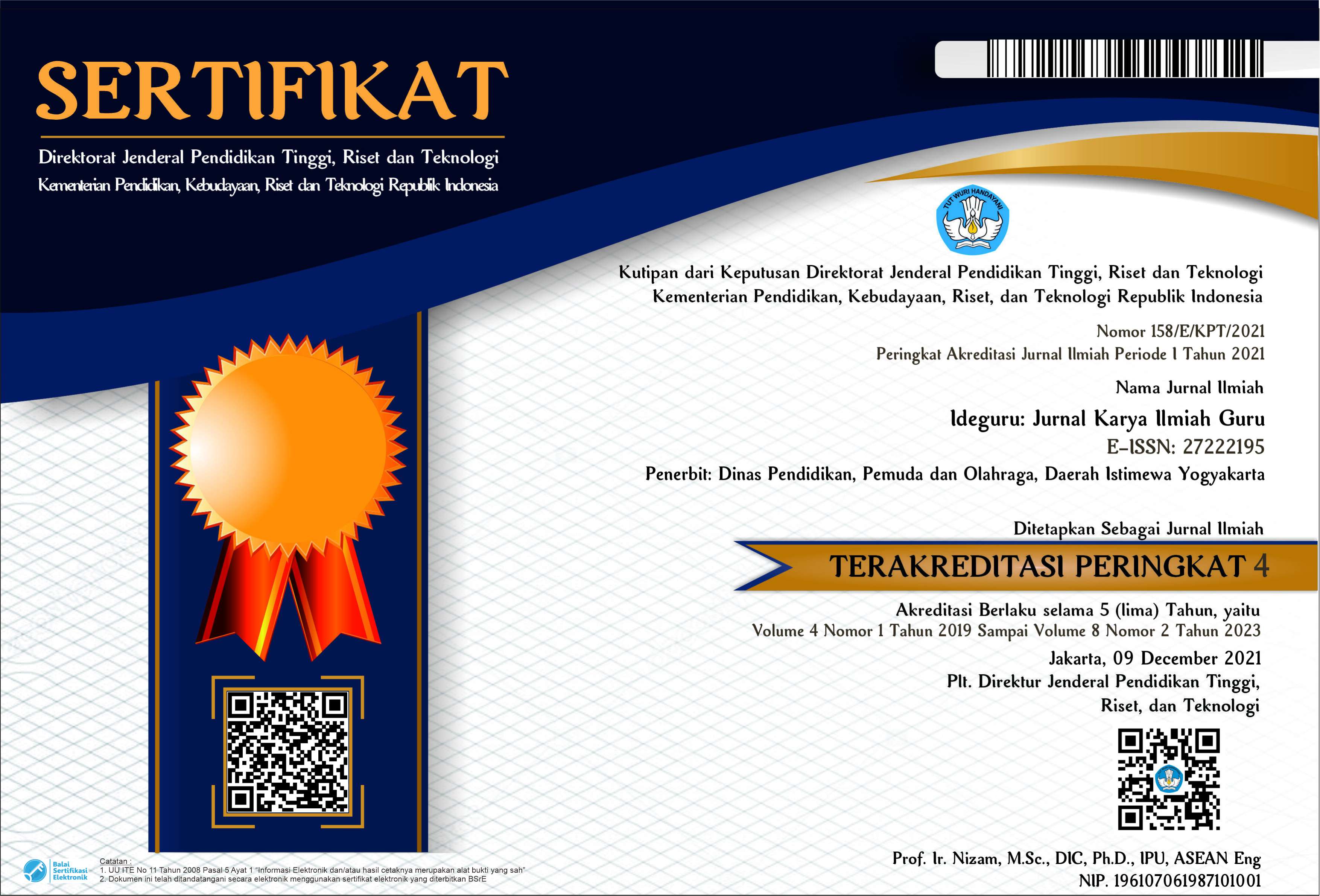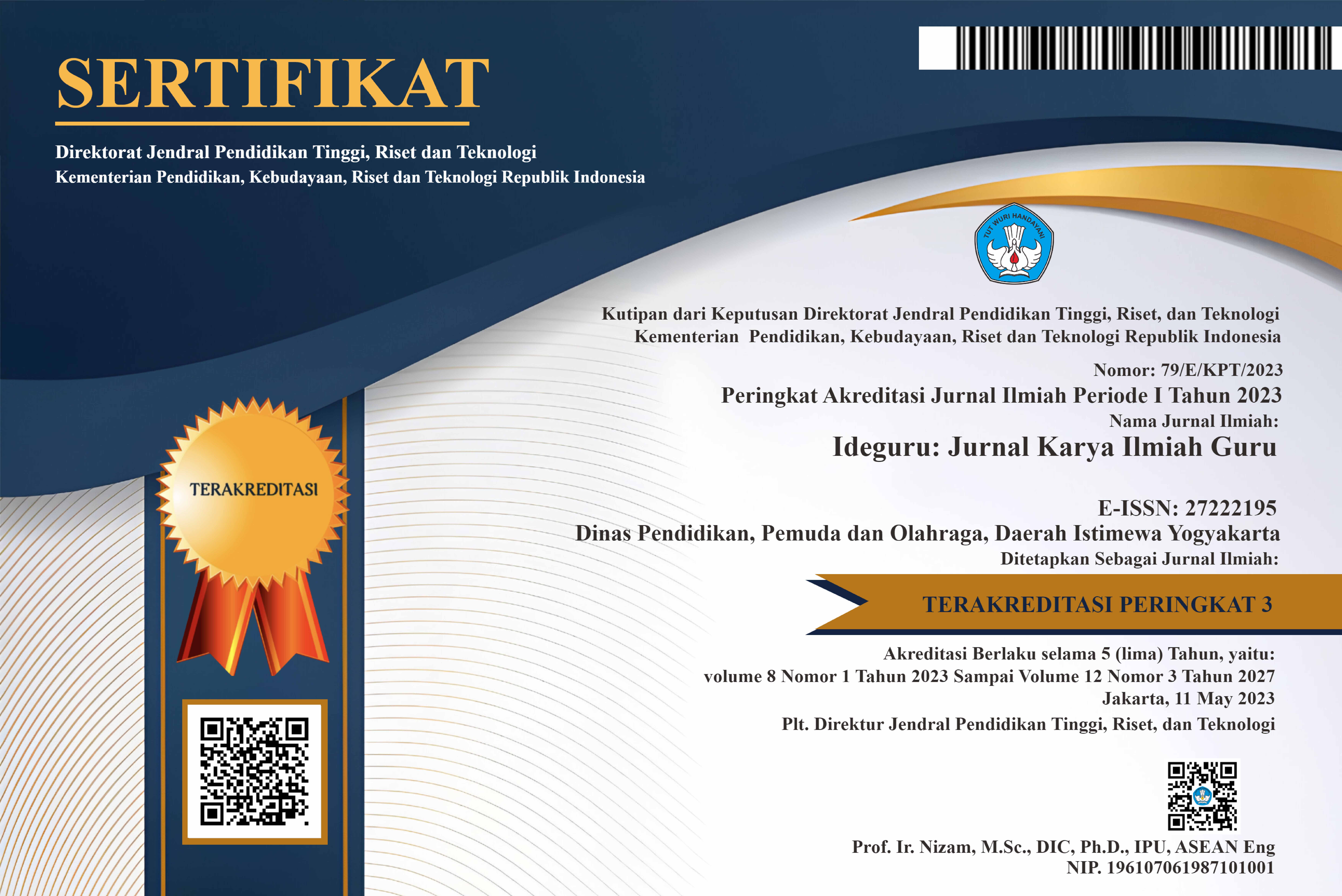Pengaruh Model PjBL terhadap Keterampilan Kolaborasi Siswa pada Pembelajaran IPA di Kelas V
Abstract
The purpose of this study is to understand the impact of the PjBL paradigm on student collaboration. This study employs a quantitative approach using the kind of study design that just uses a posttest control group. The instruments used in this study are the angket and lembar observation instruments. The sample selection technique used in this study is the jenuh sample since all of the population was designated as the study sample. The sample for this study is all students in class 5 SDN 2 Tawangbanteng for experiential learning and all students in class 5 SDN 1 Sukaratu for control. Data analysis is conducted using both descriptive and inferential statistics. The independent sample test, homogeneity test, and normality test comprise the inferential statistical test. Subsequently, to reduce some significant effects, use effect size in conjunction with Cohen's law. Based on the results of the deskriptif statistical analysis, 15 students with highly collaborative criteria were evaluated in the experimental class, while 9 students in the control group were evaluated with collaborative criteria. The results of the inferential statistical test show that Ho is not supported by H1, with a sig value of 0,003<0,05. There are differences in the collaborative learning outcomes between students using the PjBL model and students using the conventional model. Based on the uji impact size results, the category sedang has a nilai of 0.79. Due to this, it can be inferred that the PjBL model has an adverse effect on student collaboration in IPA classes in grade 5.
PDF Downloads
Copyright (c) 2024 Ajeng Anggraeni, Ani Nur Aeni, Ali Ismail

This work is licensed under a Creative Commons Attribution 4.0 International License.

 DOI:
DOI:














